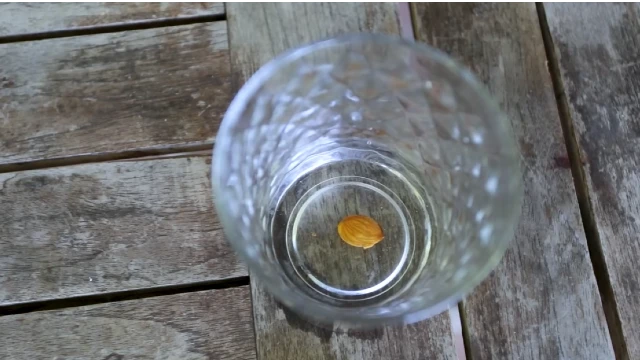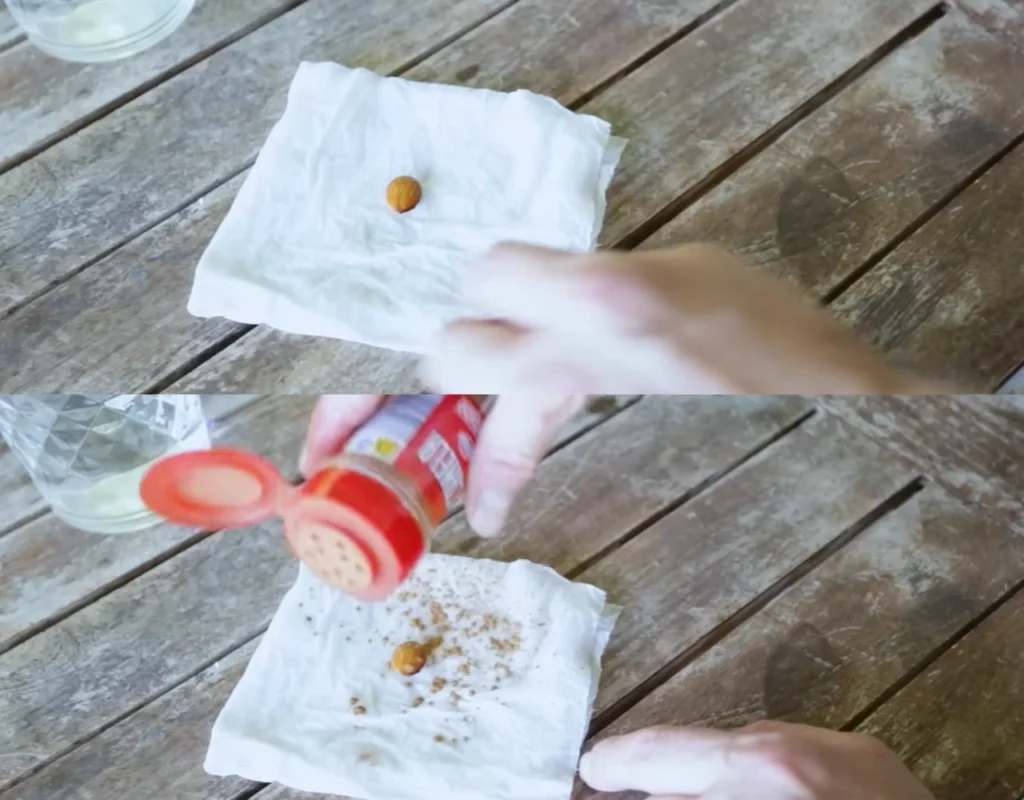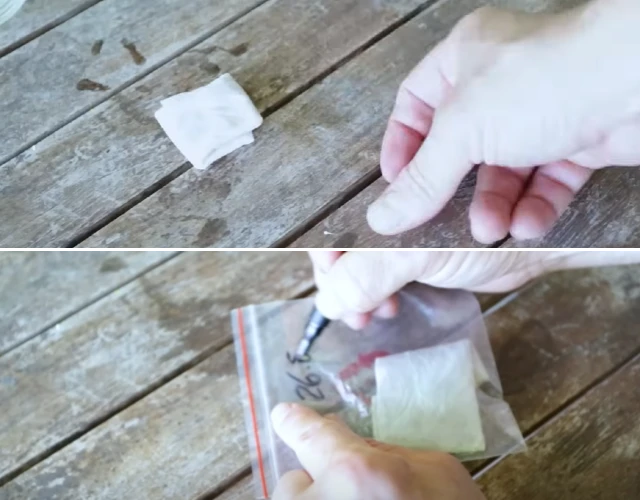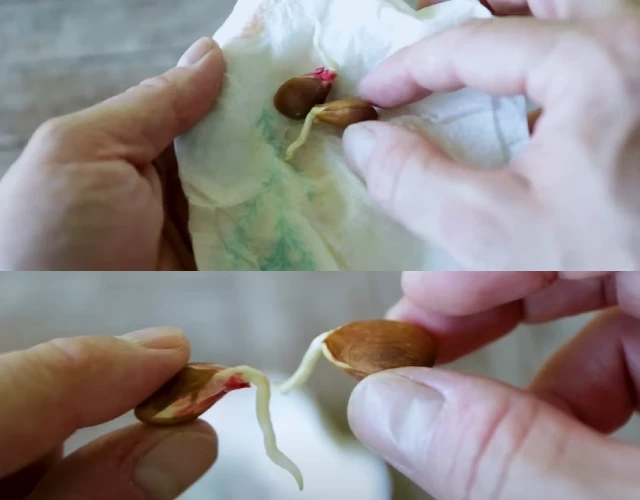Hi there, and welcome to my garden blog. My name is Matthew, and today I’m going to share with you something really exciting, how to grow a peach or nectarine tree from a seed, or what we call a “pit.”
I’ve always loved the taste of a juicy peach. But did you know you can grow your own peach or nectarine tree from that leftover pit? It’s simple, fun, and really rewarding.
Let me walk you through the steps I follow , from eating the fruit to planting a baby tree.
Also read: How I Grew a Mango Tree From Seed – Step By Step Guide
Do Peaches and Nectarines Come from the Same Tree?
Yes, they do. Peaches and nectarines are from the same species, Prunus persica. The difference is in their skin:
| Fruit | Skin Type |
|---|---|
| Peach | Fuzzy |
| Nectarine | Smooth |
Sometimes, you might even find both fruits on the same tree. That’s not a mistake, it’s a fun surprise of nature.
Will the New Tree Give You the Same Fruit?
Not exactly. Trees grown from seed don’t always grow true to the original fruit. That means the fruit might not look or taste exactly the same. But you still might end up with something delicious, or at least a healthy, beautiful tree.
What Climate Do Peach Trees Need?
Peach trees grow best in cold to moderate climates, especially in zones 4 to 9. They need about:
- 600 chill hours at 7°C or 45°F
- That’s about 25 days of cold weather
If your region doesn’t get cold winters, peaches, apples, cherries, and blueberries may not grow well there.
Let’s Talk About Stratification (Cold Shock)
In nature, peach pits sit in cold soil all winter. To mimic this at home, we give the seed a cold shock, this is called stratification.
There are two ways:
- Natural way: Bury the pit outside in autumn and let winter do the work.
- Controlled way: Chill the seed in your fridge. This is my favorite method, and I’ll explain how I do it.
My Step-by-Step Process to Germinate Peach Pits
Step 1: Crack the Pit

Gently crack the outer shell with a tool like:
- Wire cutters
- A hammer
- A vice grip
Be careful not to damage the seed inside. It helps to let the pit dry for a few days first so the seed inside shrinks a bit.
Step 2: Hydrate the Seed

- Place the seed in a glass of water for a few hours.
- If it floats after 5–6 hours, it may be dead.
- If it sinks and becomes plump, you’re good to go.
Step 3: Wrap in Paper Towel

- Wet a kitchen towel and squeeze out the extra water.
- Place the seed inside and sprinkle with cinnamon powder.
- Cinnamon helps prevent mold, it’s a natural fungicide.
- Wrap it up and place it in a ziplock bag or foil.
- Write the date and label the seed type.
- Store in the fridge for at least 2 months.

Tip: Check it every now and then. If the towel is dry, add a few drops of water.
Step 4: Check for Germination

After about a month, you might see a small root coming out. Once this happens, it’s time to plant it.
Planting the Germinated Seed

What I do when I see a nice little root:
- Use a clean pot (washed with 10% bleach to remove diseases).
- Fill it with soil and make a small hole about an inch deep.
- Gently place the seed with the root pointing down.
- Cover it lightly with soil and press it in snugly.
- Water it gently so the seed doesn’t wash away.
Put your pot in a bright spot with indirect sunlight. Once the plant is about 10–20 cm tall, you can move it to a sunnier place or under grow lights.

What Kind of Fruit Will You Get?
This is a bit of a gamble. Growing from seed means:
- You might get a strong tree with tasty fruit
- Or a tree that’s weak and never produces fruit
Some fruits that grow well from seed include:
- Peaches
- Nectarines
- Mangoes
- Citrus
- Lemons
- Almonds
But results vary. You might grow a tree that gives poor fruit or none at all.
Want to Increase Your Odds? Try Grafting
Grafting is when you take a branch (called a scion) from a good fruit tree and attach it to your seed-grown plant.
Benefits of grafting:
- You get strong roots from the seed-grown tree
- You get high-quality fruit from the grafted branch
- It’s like getting the best of both worlds
Imagine putting my head on a superhero’s body. That’s what grafting does, the brain of a great fruit tree with the strength of a well-rooted plant.
When Will Your Peach Tree Bear Fruit?
Usually, a peach tree grown from seed takes 3–5 years to bear fruit. If you use grafting, it could be as early as 2 years.
Final Thoughts
You know the best time to plant a tree? Ten years ago.
The second-best time? Today.
So if you’ve got a peach pit and a little patience, get started now. And if you’re curious about growing a cherry tree from a pit, check out my other guide where I share that journey too.
I’d love to hear your feedback and success stories. Feel free to ask questions or share your progress with me on Instagram, Twitter or in the comments below. Let’s keep growing together.
Stay safe and happy planting.
Frequently Asked Questions About Growing Peach Trees from Seed
What are the best varieties of peaches to grow from seed?
When growing a peach tree from seed, it’s best to use seeds from locally grown, organic peaches. These are more likely to adapt to your climate. Some popular varieties for home growers include:
- Elberta – Great for cold climates
- Red Haven – Reliable and sweet
- Hale Haven – Known for rich flavor
- Florida King – Ideal for warm regions
Avoid hybrid peaches if possible, as they may not grow true to seed.
What common mistakes should I avoid when germinating peach seeds?
Here are beginner mistakes to avoid when germinating peach pits:
- Skipping stratification – Seeds need cold to germinate.
- Overwatering the paper towel – Too much water leads to mold.
- Cracking the pit too hard – This can damage the seed inside.
- Using dry or shriveled seeds – These are likely not viable.
- Storing in a hot place – Germination needs consistent cool temperature.
Stay patient. Germination takes time, usually between 4 to 8 weeks.
What type of soil and fertilizer should I use for peach seedlings?
For best results, use loose, well-draining soil. A good mix would be:
- 60% potting soil
- 20% perlite or sand
- 20% compost
When the seedling is 3–4 inches tall, you can use a balanced fertilizer like 10-10-10 (Nitrogen-Phosphorus-Potassium). Apply it lightly every 3–4 weeks during the growing season.
What size pot should I use for a peach seedling?
Start with a small pot about 4–6 inches wide. This keeps the roots cozy and encourages healthy growth.
As the tree grows:
- 3–6 months: Move to a 1-gallon pot.
- 1 year and up: Move to a 3–5 gallon pot or transplant outdoors.
Always ensure the pot has good drainage holes to prevent root rot.
How do I protect my peach seedlings from pests and diseases?
Peach trees can attract pests like:
- Aphids
- Scale insects
- Caterpillars
To protect your young plant:
- Use neem oil spray once every two weeks.
- Keep the area around the pot clean.
- Avoid overwatering to prevent fungal growth.
- Inspect leaves weekly for signs of bugs or mold.
- Healthy plants are less likely to attract pests, so focus on strong soil and lighting.
How do I care for a peach tree all year round?
Here’s a simple seasonal care schedule:
- Spring: Fertilize, prune, and repot if needed.
- Summer: Water regularly, add mulch, and provide shade in extreme heat.
- Fall: Stop fertilizing, reduce watering.
- Winter: Protect from frost. Keep indoors or use mulch insulation for outdoor trees.
Peach trees need 6–8 hours of sunlight per day to stay healthy.
When and how should I transplant my peach tree outdoors?
Wait until your tree is about 1–2 feet tall and has several strong branches. Transplant during early spring when the frost risk is low.
Steps:
- Choose a sunny spot with good drainage.
- Dig a hole twice the size of the root ball.
- Gently remove the tree from the pot and place it in the hole.
- Backfill with soil and water deeply.
Add a layer of organic mulch around the base, but don’t cover the trunk.
How can I tell if my peach tree is healthy or struggling?
Signs of a healthy peach tree:
- Bright green leaves
- Strong central stem
- Fast, steady growth
- No yellowing or curling leaves
Signs of a struggling tree:
- Leaves turning brown or yellow
- Slow or no growth
- Mushy stem base (sign of overwatering)
- Mold or white powder on leaves (fungus)
Fix issues early to save the plant. Most problems are caused by overwatering or lack of light.
How and when should I prune my peach tree for best growth?
Prune in late winter or early spring, just before new growth starts. Pruning helps shape the tree and improves airflow.
Steps to prune:
- Remove dead or weak branches
- Cut branches that cross each other
- Keep the center open for sunlight
- Use clean, sharp shears
Always prune just above a bud or branch fork to encourage healthy regrowth.
How often should I water my peach tree?
Water depends on the tree’s age and the season:
- Seedlings: Water lightly 2–3 times a week
- Young trees: Deep water once a week
- Summer heat: Increase watering if soil dries too fast
Use the finger test — stick your finger 2 inches into the soil. If it’s dry, it’s time to water.


